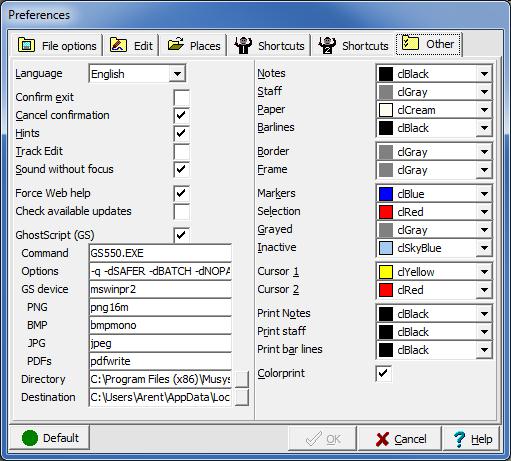Colors: Difference between revisions
No edit summary |
No edit summary |
||
| Line 11: | Line 11: | ||
With the two cursor colors you set the cursor in such a way that it always stands out as clearly as possible. | With the two cursor colors you set the cursor in such a way that it always stands out as clearly as possible. | ||
If you are printing on a monochrome printer, you will usually uncheck the {{MenuReference|Color Print}} box | If you are printing on a monochrome printer, you will usually uncheck the {{MenuReference|Color Print}} box to prevent colored gray lines (such as horizontal note lines) from appearing as dotted line on paper. | ||
If a color printer has run out of ink, it can be useful to turn off {{MenuReference|Color Print}}. | If a color printer has run out of ink, it can be useful to turn off {{MenuReference|Color Print}}. | ||
Revision as of 21:28, 15 July 2023
The color of [notes], [staff], [barlines], and [paper] can be set at [Options|Preferences|Other]
You can also adjust the color rendering of selections and markers/target points here as desired.
Under [greyed] set how secondary notes, invisible rests and hidden text will look.
Under [inactive] set the color of inactive games on the notation bar.
With the two cursor colors you set the cursor in such a way that it always stands out as clearly as possible.
If you are printing on a monochrome printer, you will usually uncheck the [Color Print] box to prevent colored gray lines (such as horizontal note lines) from appearing as dotted line on paper.
If a color printer has run out of ink, it can be useful to turn off [Color Print].
To change note color halfway through a piece of music, insert a color change.
Color changes are saved in the MusiCAD files, the settings for color usage specified here are not.

